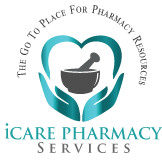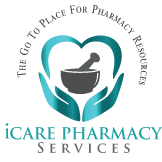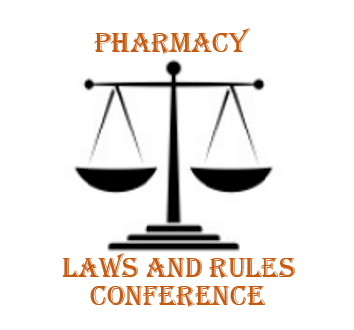Description
Emergency Pharmacy Medicine Conference
SATURDAY, JANUARY 24, 2026
Stroke of Genius: Mastering the Management of Acute Ischemic and Hemorrhagic Stroke
8:00-9:30am: 1.5 CEUs C/G/T
Karen Berger, PharmD, FASHP, FCCM, BCPS, BCCCP, Assistant Professor, Pharmacy Practice
Nova Southeastern University College of Pharmacy
Upon completion of this activity, pharmacists will be able to: Describe the pharmacologic management of acute ischemic and hemorrhage stroke; Compare and contrast thrombolytics for the management of acute ischemic stroke; Recommend appropriate treatment modalities for elevated intracranial hypertension, seizure prophylaxis, and antithrombotic reversal; Review guideline recommendations and literature for acute stroke management.
UAN: 0675-0000-26-001-L01-P*
Upon completion of this activity, technicians will be able to: Define acute ischemic and hemorrhage stroke; Identify risk factors for stroke; Compare and contrast thrombolytics for the management of acute ischemic stroke.
UAN: 0675-0000-26-001-L01-T*
Neurological Emergencies: A Focus on Headaches and Seizures
9:30-11:00am: 1.5 CEUs C/G/T
Jose A Rey, MS, PharmD, BCPP, FAAPP, Professor and Chair, Department of Pharmacy Practice, Barry and Judy Silverman College of Pharmacy, Nova Southeastern University
Upon completion of this activity, pharmacists will be able to: Differentiate the presentations of headaches and recommend appropriate pharmacotherapy for the acute management of migraine-type headache; Compare and contrast the types of seizures with emphasis on the presentation and pharmacotherapy for acute seizures and status epilepticus; Discuss the non-pharmacological treatments available for the management of migraine headaches and specific seizure disorders.
UAN: 0675-0000-26-002-L01-P
Upon completion of this activity, technicians will be able to: Differentiate the presentations of headaches; Compare and contrast the various types of seizures; Recognize the non-pharmacological treatments available for the management of migraine headaches and seizures.
UAN: 0675-0000-26-002-L01-T*
Turning the Tide: The Opioid Crisis and Evidence-Based Management of Overdose in the ED
11:15-12:45pm: 1.5 CEUs C/G/T
Joseph Cammilleri, Pharm.D,. BCACP, CPE, Ambulatory Care Clinical Pharmacist, Pain Management PGY2 Pain and Palliative Care Program Director, UF Clinical Assistant Professor, UF Health Jacksonville
Upon completion of this activity, pharmacists will be able to: Describe current trends in opioid use; Recognize the clinical spectrum of opioid toxicity, including atypical presentations and mixed overdoses; Implement evidence-based naloxone dosing strategies, routes of administration, and escalation pathways; Differentiate short-acting versus long-acting opioid exposures to guide monitoring duration and disposition; Initiate ED-based harm reduction, including take-home naloxone, brief counseling, and linkage to community resources; Start or facilitate medication for opioid use disorder in the ED and arrange rapid follow-up.
UAN: 0675-0000-26-003-L08-P*
Upon completion of this activity, technicians will be able to: Describe current trends in opioid use; Recognize the clinical spectrum of opioid toxicity; Use naloxone in emergency situations; Schedule follow-up with patients.
UAN: 0675-0000-26-003-L08-T*
Toxic Trends: Tots to Teens
12:45-1:45pm: 1 CEU C/G/T
Dawn R. Sollee, Pharm.D., DABAT, FAACT, Director, Florida/USVI Poison Information Center- Jacksonville, UF Health Jacksonville Professor, University of Florida College of Medicine, Dept. of Emergency Medicine and UF College of Pharmacy, Clinical Toxicology Fellowship Director
Upon completion of this activity, pharmacists will be able to: Describe the role of poison centers in the United States; Identify medications and household toxins that have a narrow therapeutic index in the pediatric population; Examine recent trends in adolescent suicide attempts and the management of commonly used agents; Review the general approach and management of the poisoned patient.
UAN: 0675-0000-26-004-L01-P*
Upon completion of this activity, technicians will be able to: Describe the role of poison centers in the United States; Identify medications and household toxins that have a narrow therapeutic index in the pediatric population; Examine recent trends in adolescent suicide attempts and the management of commonly used agents.
UAN: 0675-0000-26-004-L01-T
Snakebite Season: Having a Management Plan
1:45-2:15pm: 0.5 CEU C/G/T
Dawn R. Sollee, Pharm.D., DABAT, FAACT, Director, Florida/USVI Poison Information Center- Jacksonville, UF Health Jacksonville Professor, University of Florida College of Medicine, Dept. of Emergency Medicine and UF College of Pharmacy, Clinical Toxicology Fellowship Director
Upon completion of this activity, pharmacists will be able to: Describe the venomous snakes in Florida; Create a management plan for the snake envenomated patient; Evaluate whether antivenom therapy is needed.
UAN: 0675-0000-26-005-L01-P*
Upon completion of this activity, technicians will be able to: Describe the venomous snakes in Florida; Create a management plan for the snake envenomated patient; Evaluate whether antivenom therapy is needed.
UAN: 0675-0000-26-005-L01-T*
SUNDAY, JANUARY 25, 2026
Diabetic Emergencies: How to Help
8:00-9:30am: 1.5 CEUs C/G/T
Marile L. Santamarina MS, PharmD, CDCES, CPT; Clinical Trial Liaison; Teva Pharmaceuticals
Upon completion of this activity, pharmacists will be able to: Discuss the management of Diabetic Ketoacidosis (DKA). Discuss the management of Hyperosmolar Hyperglycemic State (HHS); Describe unexpected occurrences of DKA.
UAN: 0675-0000-26-007-L01-P
Upon completion of this activity, technicians will be able to: Define Diabetic Ketoacidosis (DKA) and Hyperosmolar Hyperglycemic State (HHS); Discuss the management of DKA. Discuss the management of HHS; Describe unexpected occurrences of DKA.
UAN: 0675-0000-26-007-L01-T
Managing Cardiovascular Emergencies
9:30-11:00am 1.5 CEUs C/G/T
Rim Assil, PharmD, MBA, PGY-2 Cardiology Pharmacy Resident, West Palm Beah VA Medical Center, VA Healthcare System
Upon completion of this activity, pharmacists will be able to: Differentiate severe hypertension from hypertensive emergency based on patient presentation and target-organ involvement and determine when inpatient versus outpatient management is appropriate; Recommend individualized treatment plans for hypertensive emergencies by assessing patient-specific factors, pharmacokinetics (ADME), contraindications, and adverse effects of antihypertensive agents; Differentiate STEMI, NSTEMI, and unstable angina using pathophysiology, ECG characteristics, and biomarkers, and select appropriate initial pharmacotherapy for ACS; Optimize antithrombotic therapy during hospitalization and discharge for ACS treatment; Recognize hallmark features of acute aortic dissection versus ACS while recommending appropriate initial stabilization, including selection of IV antihypertensives.
UAN: 0675-0000-26-008-L01-P*
Upon completion of this activity, technicians will be able to: Differentiate severe hypertension from hypertensive emergency based on patient presentation and target-organ involvement; Differentiate STEMI, NSTEMI, and unstable angina; Recognize hallmark features of acute aortic dissection versus ACS.
UAN: 0675-0000-26-008-L01-T*
Meningitis: Time Is Brain – A Pharmacist’s Role in a Rapid Response
11:15-12:45pm: 1.5 CEUs C/G/T
Elias B. Chahine, PharmD, FCCP, FASCP, FFSHP, BCIDP, Professor of Pharmacy Practice, Chair, Department of Pharmacy Practice and Administration, Gregory School of Pharmacy, Palm Beach Atlantic University
Upon completion of this activity, pharmacists will be able to: Identify risk factors that increase susceptibility to bacterial meningitis; Recognize signs and symptoms of meningitis that require immediate intervention; Differentiate common bacterial pathogens causing meningitis across age groups; Interpret cerebrospinal fluid results to rapidly distinguish bacterial from viral or other etiologies; Design an evidence-based empiric antibiotic regimen tailored to patient; Identify the timing, benefits, and limitations of dexamethasone therapy in bacterial meningitis; Recommend appropriate vaccines and post-exposure prophylaxis strategies to prevent meningitis.
UAN: 0675-0000-26-009-L01-P*
Upon completion of this activity, technicians will be able to: Identify risk factors that increase susceptibility to bacterial meningitis; Distinguish signs and symptoms of meningitis that require immediate intervention; Differentiate common bacterial pathogens causing meningitis across age groups; Compare fluid results to distinguish bacterial from viral or other etiologies.
UAN: 0675-0000-26-009-L01-T*
A Sticky Situation: A Review of Sickle Cell Disease
12:45pm-2:15pm: 1.5 CEUs C/G/T
Taylor Bunn PharmD, Pain Management and Palliative Care PGY-2 Resident, UF Health Jacksonville
Upon completion of this activity, pharmacists will be able to: Define sickle cell disease and associated complications; Discuss the historical identification of the disease; Evaluate available therapy options used to treat SCD; Discuss and appreciate the use of gene therapy as a cure.
UAN: 0675-0000-26-010-L01-P
Upon completion of this activity, technicians will be able to: Define sickle cell disease and associated complications; Discuss the historical identification of the disease; Evaluate available therapy options used to treat SCD; Discuss and appreciate the use of gene therapy as a cure.
UAN: 0675-0000-26-010-L01-T
C = Consultant CPE G = General Pharmacist CPE T = Technician CPE





